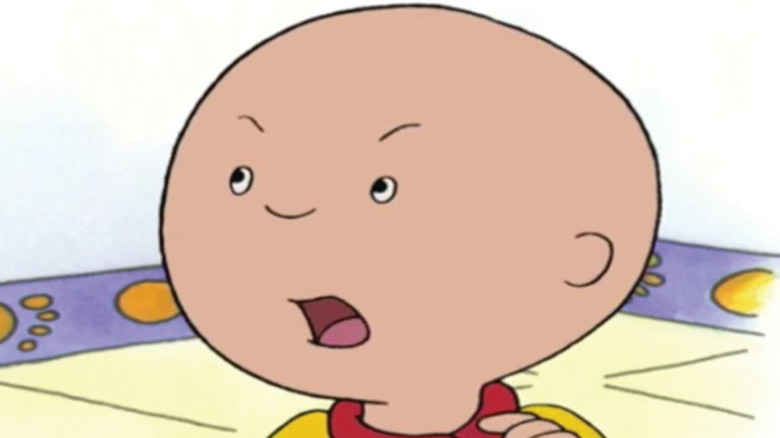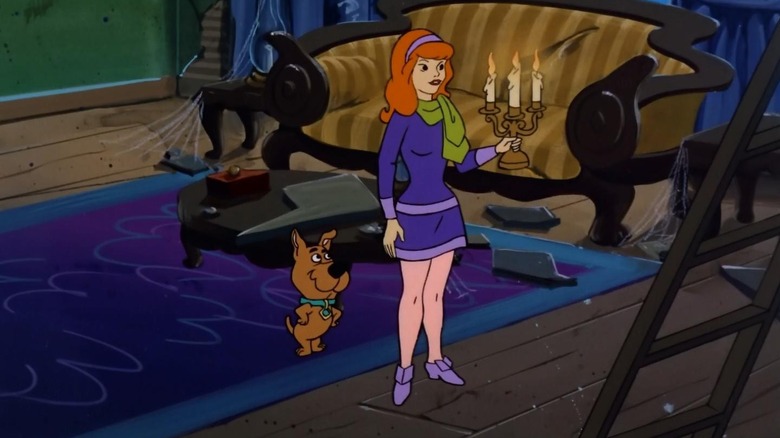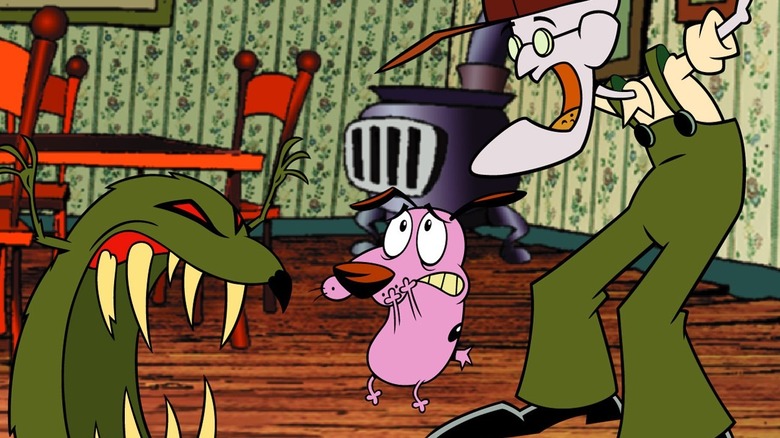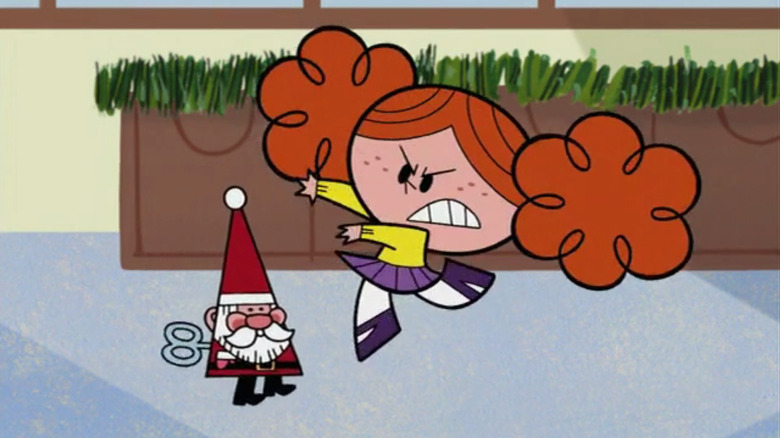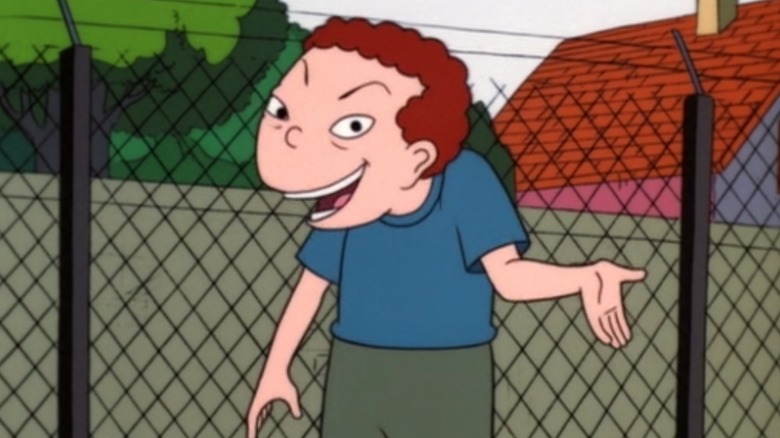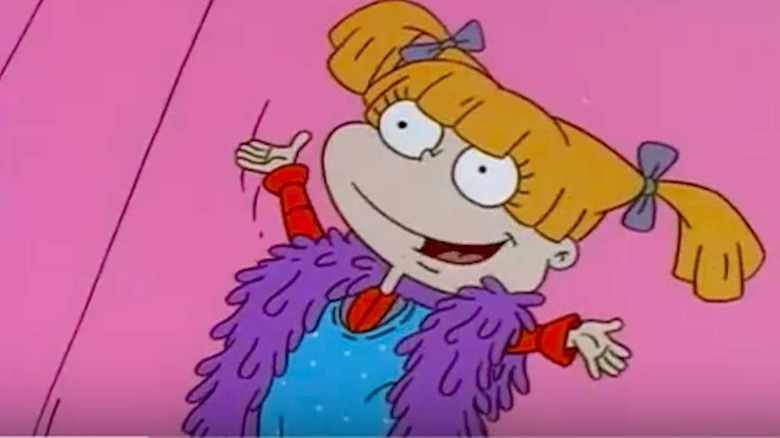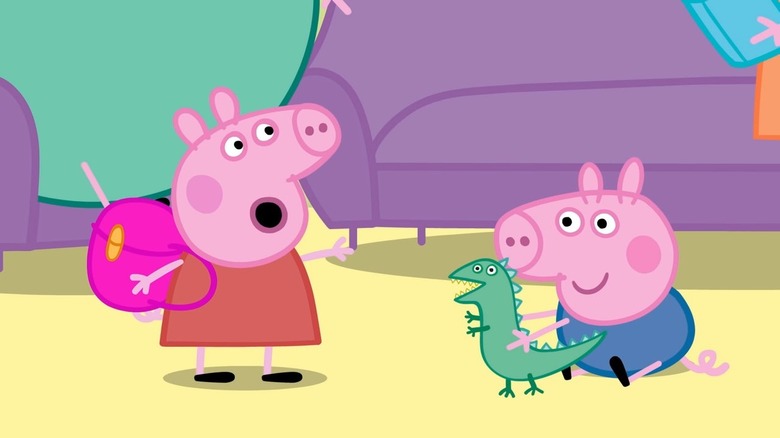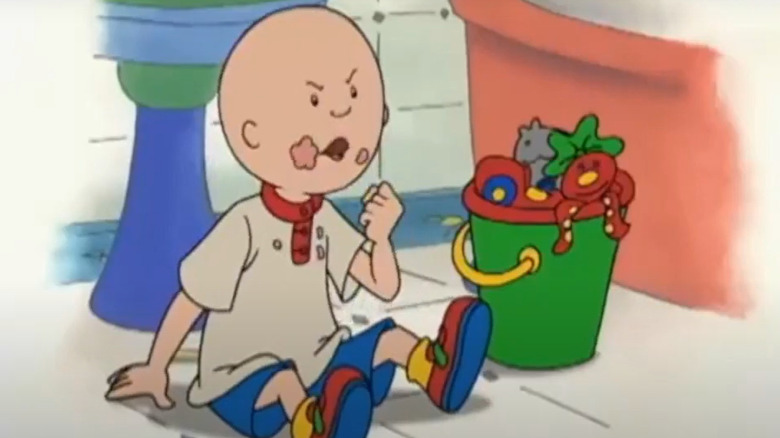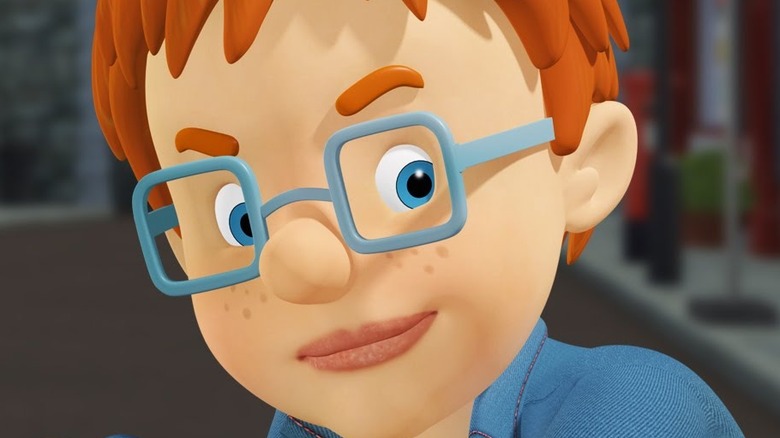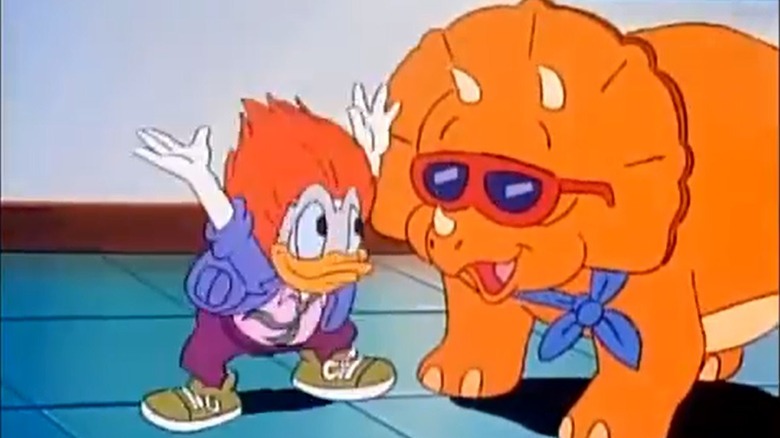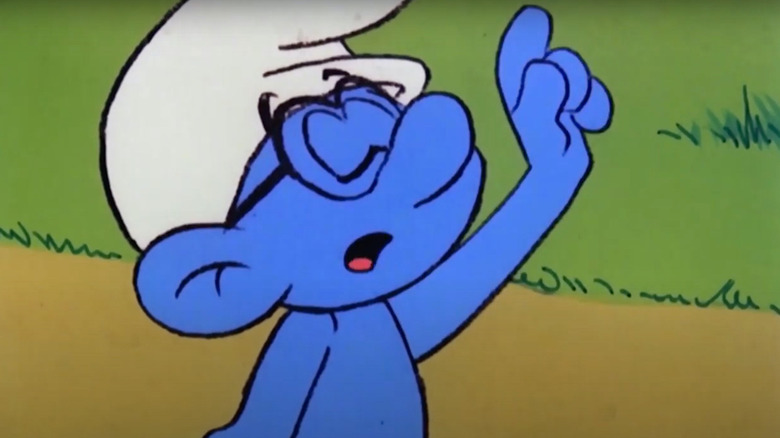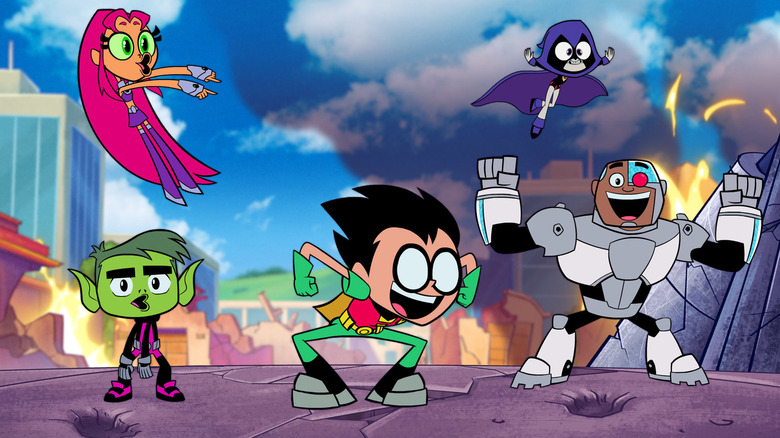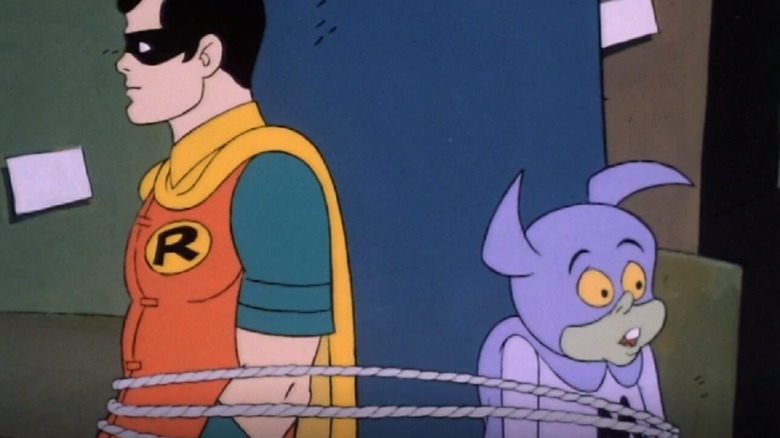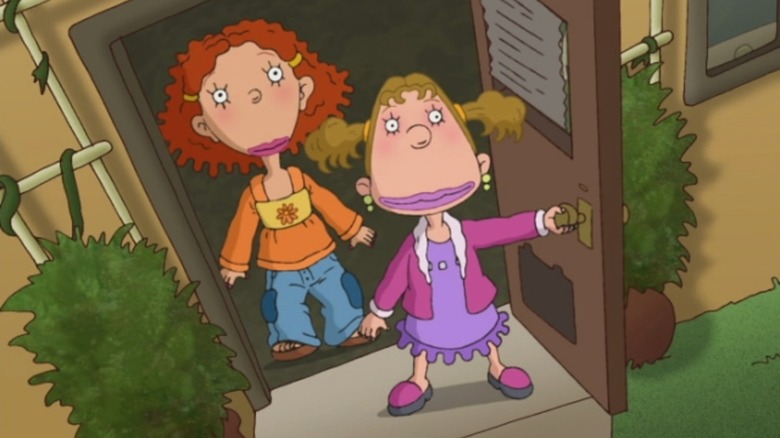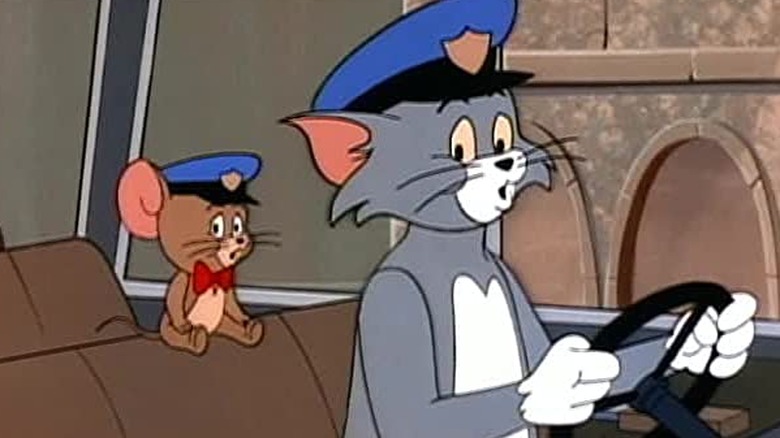Children's Show Characters That Are Actually Terrible
Hollywood has gone all-in on fan nostalgia by rebooting/remaking/spinning-off every show from the recent past that was ever even marginally popular. That is because everyone loves a good television show, but there is something extra special about the shows we watch at a younger age.
That is also why children's shows have a unique place in pop culture where they are embraced unconditionally by their young viewers, and then later get re-examined under a more critical gaze once those same viewers grow into adulthood. That is when you start to notice the deeper nuances in the show's writing and concepts, and pick up on character details you may have missed the first time around.
Not all those details make the character better, though. In fact, sometimes viewers grow to realize that characters on children's shows are a lot more hatable than they remember. Let's take a look at 14 children's show characters that are a lot more obnoxious than they may seem at first glance.
Scrappy-Doo (Scooby-Doo)
Shows get new characters added to the main cast all the time. Sometimes those additions become an important part of the show's new dynamic, like Mike Hannigan (Paul Rudd) on "Friends." Other times the new addition can overpower the entire show's narrative, like Steve Urkel (Jaleel White) on "Family Matters."
Other times, you get a character like Scrappy-Doo. The loud and energetic little pup was introduced as the nephew of Scooby-Doo in the latter's cartoon series in 1979. The ratings for the show had started to dip, and series writer Mark Evanier credits the arrival of Scrappy with keeping the show running a few more years, so it seems the Great Dane puppy was fairly popular, at least at the start of his tenure.
Later generations of fans grew to dislike how much attention Scrappy was getting on the show, and the way he affected the dynamic of the main cast of Scooby and the gang. Scrappy's popularity sunk so low that he was reimagined as the main villain in the 2002 live-action "Scooby-Doo" film. When James Gunn, who wrote the screenplay for the movie, was asked why he made Scrappy into a villain, Gunn bluntly replied with, "Because Scrappy is just [an] ... awful person."
Eustace Bagge (Courage the Cowardly Dog)
Farmers and old men are generally treated kindly on children's shows. They are often depicted as fatherly founts of wisdom, or harmless backdrop characters to whatever the protagonist of the show has going on at the moment. Eustace Bagge from "Courage the Cowardly Dog" bucks this trend by being an actively awful person.
As the title suggests, the show is about a dog named Courage, who is an extreme coward. However, his cowardice does not stop him from protecting his owners, Eustace and his wife Muriel. While Muriel is every bit the simple, warm-hearted farmer stereotype you could hope for, her husband is a crotchety, greedy, mean-spirited jerk who constantly goes out of his way to make Courage's life miserable.
The main villains on the show are aliens and otherworldly monsters, but viewers realize as grown-ups how much more realistic and compelling a villain Eustace was than the villain-of-the-week creatures. His habit of addressing Courage as "stupid dog," putting on scary masks to send Courage into a frenzied panic, and taking his irritation out on the family pet all line up depressingly well with real-life cases of animal abuse. Really, if Courage hadn't been so loyal, the best thing he could have done was just let the monsters take Eustace.
Princess Morbucks (The Powerpuff Girls)
In a sea of superhero cartoons aimed squarely at young boys, "The Powerpuff Girls" was a breath of fresh air. It shone the spotlight on superpowered tween sisters Blossom, Bubbles, and Buttercup, and their quest to keep their city safe from just the most adorable villains you can imagine.
While most of the villains on the show were fanciful creatures with little basis in reality, things got pretty real with the introduction of "Princess Morbucks." As the name so succinctly indicates, Morbucks was a little girl whose superpower was having an uber-rich dad who gave his little princess anything she wanted. Princess Morbucks typifies the worst kind of spoiled children that exist in the real world.
She is the kind of over-entitled brat who thinks the world owes her everything for simply existing. Morbucks repeatedly tries to become a Powerpuff Girl with the help of her dad's resources. When that doesn't work, she tries to take out the competition by every underhanded means available. Amusingly, Princess Morbucks might be a pastiche of "Little Orphan Annie." Both characters are red-haired, freckle-faced little girls, while Daddy Morbucks sounds quite similar to Annie's adoptive father, Daddy Warbucks.
Randall Weems (Recess)
"Recess" was a show that dared to ask, what if the typical American school playground during recess became a sophisticated, small-scale version of society? Complete with kids being placed in highly regimented social groups and a king to oversee the running of the entire structure and dole out punishment to wrongdoers.
The central conceit of the show might appear limited, but it works surprisingly well due to the well-rounded nature of the characters of the children who take part in the "recess" society. However not every character is likeable, least of all Randall Weems. Randall is the school's resident snitch, which might sound like an insult if Randall wasn't so proud of the fact. Throughout the show, Randall is shown to be completely devoted to the cause of snitching on his fellow classmates to his beloved teacher Miss Finster.
No matter how much the other students loathe him for it, Randall takes great glee in being the one to spill everyone's secrets to the grown ups. Randall is also shown at different points to be a coward and a turncoat. To make matters worse, he is not above using information he has on other kids to blackmail them for favors. Honestly, if he wasn't such a scrawny little weasel that you occasionally feel sorry for, Randall would be one of the most despicable characters in fiction.
Angelica Pickles (Rugrats)
Blonde, pigtailed, and angelic looking, Angelica Pickles is a prime example of a wolf in sheep's clothing. The cousin of Tommy and Dil Pickles, Angelica served as one of the main villains on "Rugrats," which is a truly awful statement when you remember the heroes of the series are literal toddlers that Angelica delights in terrorizing.
At just three years old, Angelica is a spoiled, head-strong little tyrant who can communicate with adults as well as infants. Instead of acting as a bridge of understanding between the two groups, Angelica uses her advantage entirely for her own ends. Over the years, Angelica has forced the babies to compete with each other to be a part of her club.
She has also frequently played the babies off against each other, pinned the blame for her cat's actions on Tommy's dog, convinced the other babies that Chuckie is an alien, and faked a ransom note to get free candy. Honestly, a grown-up version of Angelica would probably be a full-blown psychopath who'd cyber-bully her classmates as a "joke." Fortunately, teenage Angelica who showed up later in the series is shown to have calmed down somewhat and isn't nearly as awful as her three-year-old self.
Peppa (Peppa Pig)
Protagonists of children's shows that focus on learning have a tricky road to travel. Through the protagonists, their audience is supposed to learn important life lessons to become better people. But in order to learn those lessons, the protagonists have to frequently make mistakes that need to be corrected.
Peppa Pig is one such protagonist who is hard to sympathize with because of the many, many awful things she does that form the basis of the life lessons on her show. The four-year-old female pig leads a pretty idyllic life with her little family, the friends in her playgroup, and her pet fish Goldie. However, Peppa insists on adding unnecessary drama to her life through her bratty behavior.
She makes fun of her father for putting on weight. She becomes jealous and rude when her friends are better at doing something than her. She's taught a generation of children to say "Yuk" in response to being told to do anything they don't want to. But worst of all is how badly Peppa treats her little brother George simply because he wants to play with his older sister and her friends.
Caillou (Caillou)
If Peppa Pig is the modern flagbearer of the "troublesome children's show protagonist" archetype, Caillou is the OG. Much like Peppa, Caillou's life revolves around exploring the world around him with an inquisitive spirit. Also like Peppa, the dude can become quite the little monster if he is not allowed to do what he wants all the time.
He complains non-stop about things he does not like, and throws temper tantrums at the drop of a hat. He pinched his baby sister, called his friend "stupid," and ran wild in the school when Sarah took him to her class as part of a "siblings day" project. To add to the chaos, it's pretty clear that much of Caillou's bad behavior is enabled by his weak-willed parents.
Things got so bad that many articles were written about just how much people hated Caillou and his show. Today the character is better known as a symbol of internet hate than for his own show. You know hating Caillou has gone mainstream when the character gets specifically called out by "Last Week Tonight" host John Oliver.
Norman Price (Fireman Sam)
Imagine "Dennis the Menace" without any of the charm or charisma, and you have Norman Price in a nutshell. Norman holds the record for being rescued the most number of times, and roughly all those times he was responsible for his own predicament. Norman refuses to learn from experience, and goes right back to work getting into trouble again.
Also, and this isn't really his fault, but the kid has the most punchable face in all of children's show programming. It doesn't help that he seems to have made it his mission to make life as difficult as possible for the people of his town. While other children's show protagonists often get into trouble because they don't know any better, Norman is a much more proactive participant. You know, like the time he tied his friend James to a chair and left him in a room set on fire.
That's not a harmless gag, it's some straight-up supervillain-level plotting. We're pretty sure Norman's reputation as a "prankster" will get him sent to prison the minute the kid turns 18, or if he ever steps foot outside of his hometown where all the grown-ups are inexplicably cool with Norman's life-threatening antics.
Bubba and Tootsie (DuckTales)
The great thing about children's shows is that they often don't have to follow strict rules of logic or world-building that grown-up shows do. But this can also lead to the addition of bizarre new elements to a children's show that leave you wondering who thought such an addition would be a good idea.
Case in point, Bubba the Caveduck and his pet triceratops Tootsie. The duo were introduced in a later season of "DuckTales" (1987) when the show was in need of new plotlines. Bubba was a prehistoric duck who, along with Tootsie, came to live alongside Scrooge McDuck and his nephews in their mansion after some time-travelling shenanigans.
The problem with Bubba was he started getting way more prominence in the show's storylines than his popularity warranted. The character was not a huge part of the 2017 reboot of "DuckTales," but he did show up for a single episode where it was implied that he was one of the earliest ancestors from whom the entire McDuck family tree has descended.
Brainy Smurf (The Smurfs)
At first, "The Smurfs" looks to be the portrait of an idyllic society as embodied by Smurf village. Every Smurf in the village gets one defining trait, and their jobs and personalities are built around that trait. Because they all need each other's highly specific talents, the Smurfs live together in peace and harmony. At least, that is the theory.
In truth, some of the Smurfs' defining traits seems to be built around being obnoxious tools and nothing else. There is Grumpy Smurf, whose job is to get annoyed over every little thing, Stinky Smurf, whose defining trait is more of an unfortunate physical condition than a talent, and finally, there is Brainy Smurf, who manages to be more annoying than every other resident of Smurf village.
While ostensibly supposed to be the voice of reason among his peers, Brainy is too in love with his own mind to be likable. He constantly brags about his intelligence, looks down on the other Smurfs, and acts like he is Papa Smurf's second-in-command despite there being no such actual position. To top it all, while Brainy talks a good game, he has proven himself to be no more competent at dealing with actual problems than the other Smurfs, which means his problem-solver persona is all just an act.
Everyone (Teen Titans Go!)
Cartoons are no strangers to reboots or reinventions, but the more heavily praised an original cartoon is, the more skeptical fans are when they learn it is being rebooted. Case in point, 2003's "Teen Titans" cartoon series, which was praised for its complex plotlines, strong central cast of characters, and believable emotional arcs.
The series got a quasi-spinoff in 2013 called "Teen Titans Go!" The new show was exactly like the original, except not really, because all the returning main characters were now just awful people in every way. Robin, Raven, Beast Boy, Starfire, and Cyborg on "Teen Titans Go!" are like parody versions of the "Teen Titans" characters. They rarely fight crime, and are frequently depicted more as self-absorbed teenagers than superheroes.
The creators of the show are aware that fans of the original are not happy with the changes made to the main characters. As producer Michael Jelenic told Comics Alliance, "We decided to bring back the original cast because they had good chemistry, and so far, it's worked. For everybody except for fans of the original show." The issue has become so hotly debated that "Teen Titans Go!" did an entire episode about its characters needing to be more like the guys from the original "Teen Titans."
Bat-Mite (The New Adventures of Batman)
It might seem like a strange idea today, but before Tim Burton made 1989's "Batman," or 1992's "Batman: The Animated Series" redefined children's animation, the Caped Crusader was considered a light-hearted and rather silly figure in pop culture. A big part of that image was thanks to the success of the "Batman" television series from the 1960s starring Adam West and Burt Ward.
"The New Adventures of Batman" was a cartoon show that carried forward the spirit of West's live-action series. However, it went one step further with the introduction of Bat-Mite, an all-powerful imp from another dimension who unknowingly ends up complicating matters for the Dark Knight and his friends. While Bat-Mite had appeared occasionally in other "Batman" stories in the past, on this show he was made a series regular, which only proved that a little bit of Bat-Mite went a long way for most audiences.
Bat-Mite has often been compared to the "Great Gazoo" from the "Flintstones," another superpowered comic relief character who ends up being more annoying than its creators intended. Fortunately, Bat-Mite was able to get past the negative reviews he got on the show, and continued to pop up in "Batman"-related stories over the years as a more well-developed character.
Dodie (As Told by Ginger)
Deirdre Hortense "Dodie" Bishop was the best friend of the main character on the classic show "As Told by Ginger." Much like Ginger, and their other best friend Macie, Dodie desperately wants to be a "popular girl" at their school. Dodie's desperation is clearly greater than Ginger or Macie's, which makes her do all kinds of questionable things.
Dodie's thing is that she is an expert gossipmonger. She's is not above lying or cheating to get what she wants, like the time she faked an injury to become a member of the pep squad. Dodie has also shown no hesitation in selling out her friends for her own benefit, and gets mad at her own family members for the pettiest reasons.
Perhaps the thing that made Dodie even more infuriating was how little comeuppance she got for her bad behavior. She continued being a part of the main trio despite proving herself a bad friend again and again, and rarely got called out for her toxic behavior.
Jerry Mouse (Tom and Jerry)
Everyone knows the basic story of "Tom and Jerry." There is Tom the cat and Jerry the mouse. Together, the iconic duo is the "Laurel and Hardy" of the cartoon world. Their battles within the confines of the house Tom belongs to have become the stuff of legends, where Tom is the dim-witted Goliath, while Jerry is the quick-witted but much tinier David.
As such, Jerry is usually depicted as the protagonist of the series. But as you grow older, you begin to realize how unfairly Tom is depicted in the cartoons. After all, the dude is a house pet, and is specifically expected to help keep his owners' house and belongings free of vermin. On the other hand, Jerry is the undesired house guest who steals what he wants, destroys house property, and even brings his pals from the wild into the house for extended periods.
Who knows what kind of diseases or dangerous bacteria Jerry, his nephew Nibbles, or Quacker the Duckling have brought into the house over the years? As you become an adult and a homeowner, you start to realize the danger posed by rats and mice to your property, and that's when Tom starts looking more and more like the good guy than Jerry Mouse.
